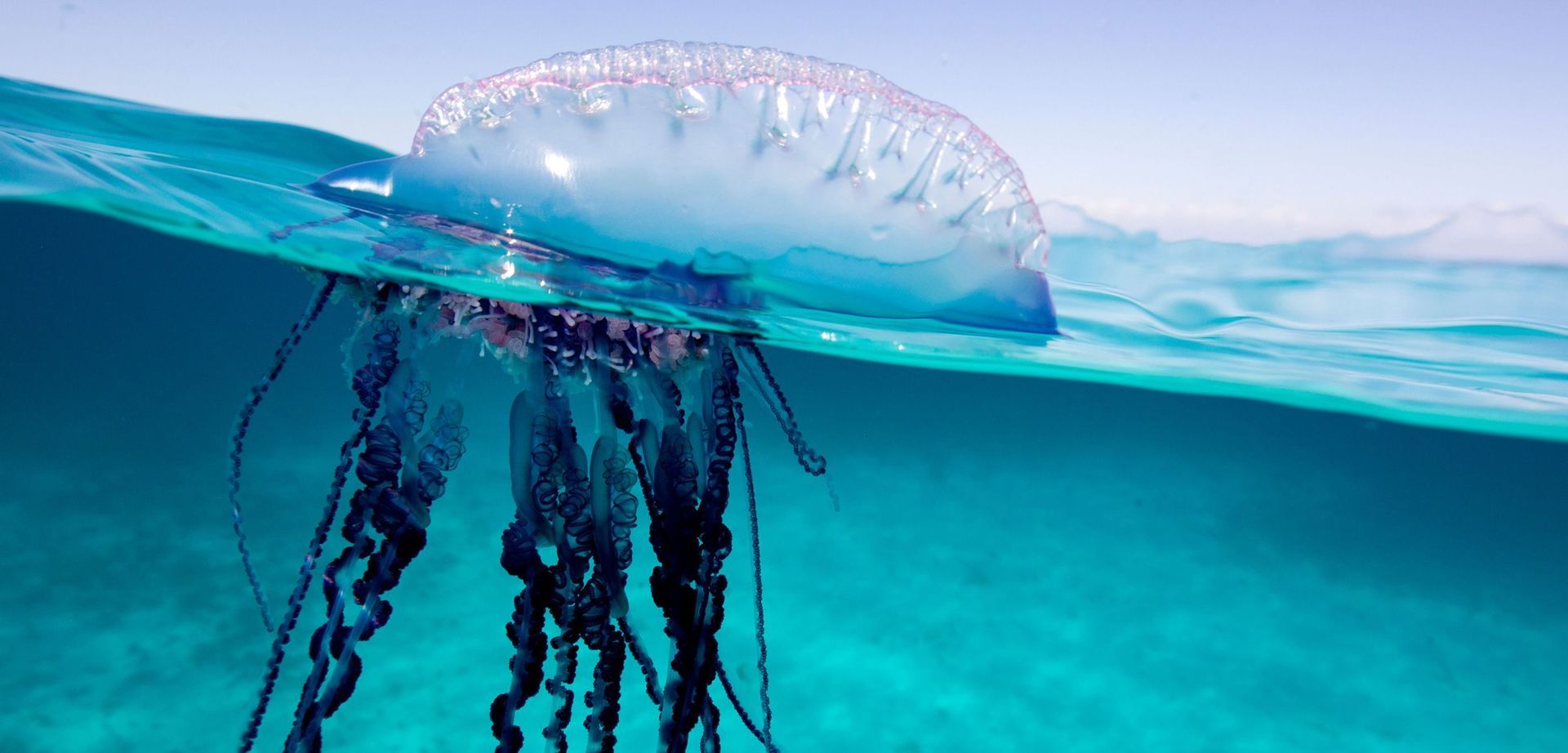The Portuguese Man O' War
The Portuguese Man O' War: A South Carolina Visitor

The Portuguese Man O' War: A South Carolina Visitor
Along the beautiful coasts of South Carolina, beachgoers occasionally encounter a marine creature as captivating as it is dangerous: the Portuguese man o' war. Known for its striking appearance and potent sting, this creature is often mistaken for a jellyfish, but it’s actually a siphonophore—a complex organism composed of multiple specialized, interdependent organisms called zooids. Let’s dive into what makes the Portuguese man o' war so unique and explore its presence along the shores of South Carolina.
Anatomy of a Portuguese Man O' War
The Portuguese man o' war is instantly recognizable by its translucent, gas-filled float, which can be up to a foot long and tinged with hues of pink, purple, and blue. This float sits on the water's surface, helping it drift with the ocean currents and winds. Underneath, tentacles that can stretch over 30 feet dangle and trail, each lined with nematocysts—specialized stinging cells that deliver toxins potent enough to paralyze small fish and crustaceans.
Not a Jellyfish: The Siphonophore
While the man o' war resembles a jellyfish, it belongs to a different order. Unlike single-bodied organisms, the Portuguese man o' war is a siphonophore, meaning it's composed of multiple zooids, each with a unique function. The four types of zooids include the float, which provides buoyancy, and tentacles, which capture prey. Other zooids digest food and reproduce, enabling the colony to survive as one cohesive entity.
Why Are They on South Carolina Shores?
The Portuguese man o' war is typically found in warm, tropical waters. However, it's known to be carried by the Gulf Stream, which flows along the East Coast. Seasonal currents, especially in the spring and summer, bring these creatures to South Carolina's coast. They often appear after storms or strong winds, which push them closer to shore, and while not as common as jellyfish, they’ve become a familiar sight during certain times of the year.
The Sting and How to Stay Safe
Encounters with the Portuguese man o' war can be painful. The stinging cells on their tentacles can cause intense burning, redness, welts, and, in severe cases, allergic reactions or respiratory issues. Even dead specimens on the beach retain their sting, so it’s wise to steer clear of them. If you or someone else is stung, here are some steps to follow:
1. Rinse the Area with Seawater**: Avoid using fresh water, as it may trigger more stinging cells to release toxins.
2. Remove Tentacles Carefully**: Use tweezers or an object like a stick to lift any tentacle remnants from the skin.
3. Apply Heat or Vinegar**: Although vinegar helps with most jellyfish stings, it might aggravate a man o' war sting. Hot water immersion (113°F or as hot as tolerable) can help alleviate pain.
4. Seek Medical Attention**: If symptoms worsen, it’s essential to get medical help as allergic reactions can be serious.
The Importance of the Portuguese Man O' War in the Ecosystem
Despite its fearsome reputation, the Portuguese man o' war plays a vital role in the marine ecosystem. As a predator, it helps regulate populations of fish and crustaceans, maintaining a balanced food web. It also serves as food for some marine species, like the loggerhead turtle, which has a natural immunity to its stings.
What to Do if You Spot One
If you encounter a Portuguese man o' war on a South Carolina beach, the best approach is to observe from a distance. Alert others nearby, especially children, and avoid direct contact. This fascinating organism is a reminder of the unique marine biodiversity along South Carolina’s coastline and an example of the incredible adaptations life has developed in the ocean.
Concluding Thoughts
The Portuguese man o' war adds a layer of mystique to South Carolina’s beaches, where every trip to the shore is an opportunity to experience the wonder of marine life. Whether you’re drawn by curiosity or tread carefully to avoid its sting, the Portuguese man o' war is a creature worth respecting. As with any wildlife encounter, appreciating the man o' war from a safe distance is key to a memorable and safe beach day in the Palmetto State.


